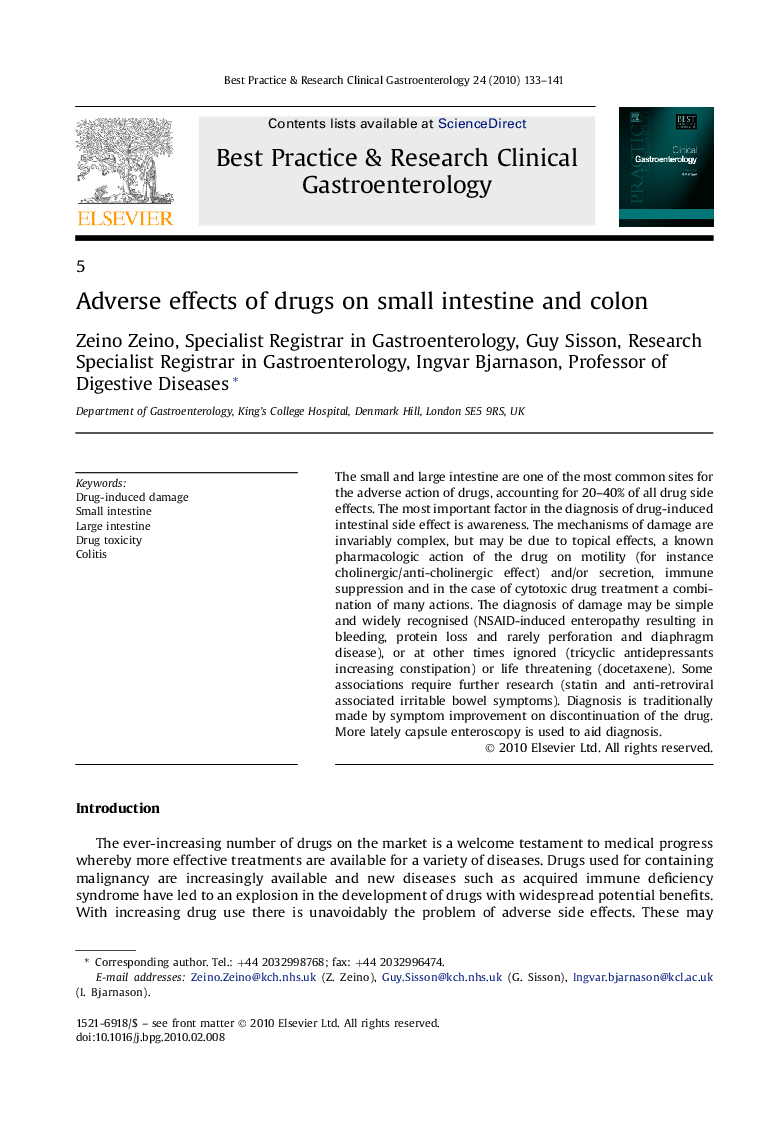| Article ID | Journal | Published Year | Pages | File Type |
|---|---|---|---|---|
| 3254729 | Best Practice & Research Clinical Gastroenterology | 2010 | 9 Pages |
The small and large intestine are one of the most common sites for the adverse action of drugs, accounting for 20–40% of all drug side effects. The most important factor in the diagnosis of drug-induced intestinal side effect is awareness. The mechanisms of damage are invariably complex, but may be due to topical effects, a known pharmacologic action of the drug on motility (for instance cholinergic/anti-cholinergic effect) and/or secretion, immune suppression and in the case of cytotoxic drug treatment a combination of many actions. The diagnosis of damage may be simple and widely recognised (NSAID-induced enteropathy resulting in bleeding, protein loss and rarely perforation and diaphragm disease), or at other times ignored (tricyclic antidepressants increasing constipation) or life threatening (docetaxene). Some associations require further research (statin and anti-retroviral associated irritable bowel symptoms). Diagnosis is traditionally made by symptom improvement on discontinuation of the drug. More lately capsule enteroscopy is used to aid diagnosis.
